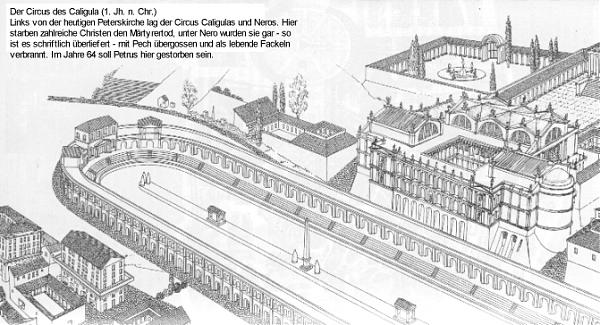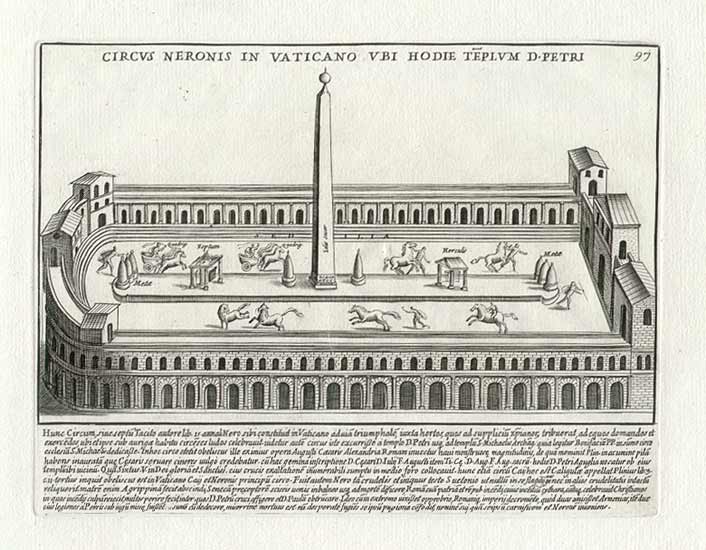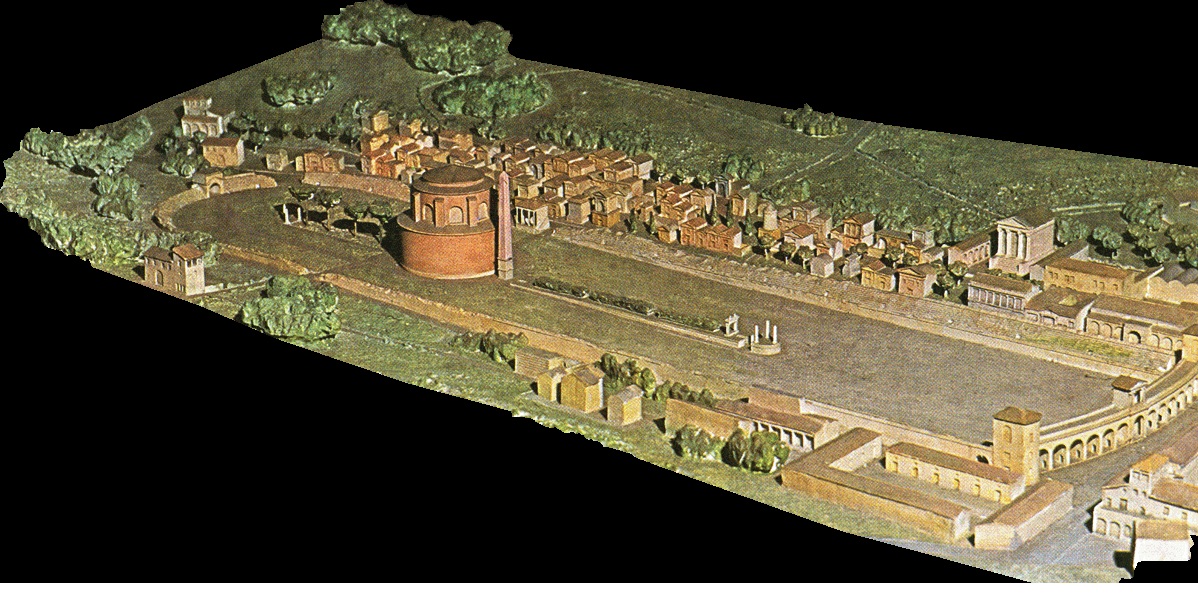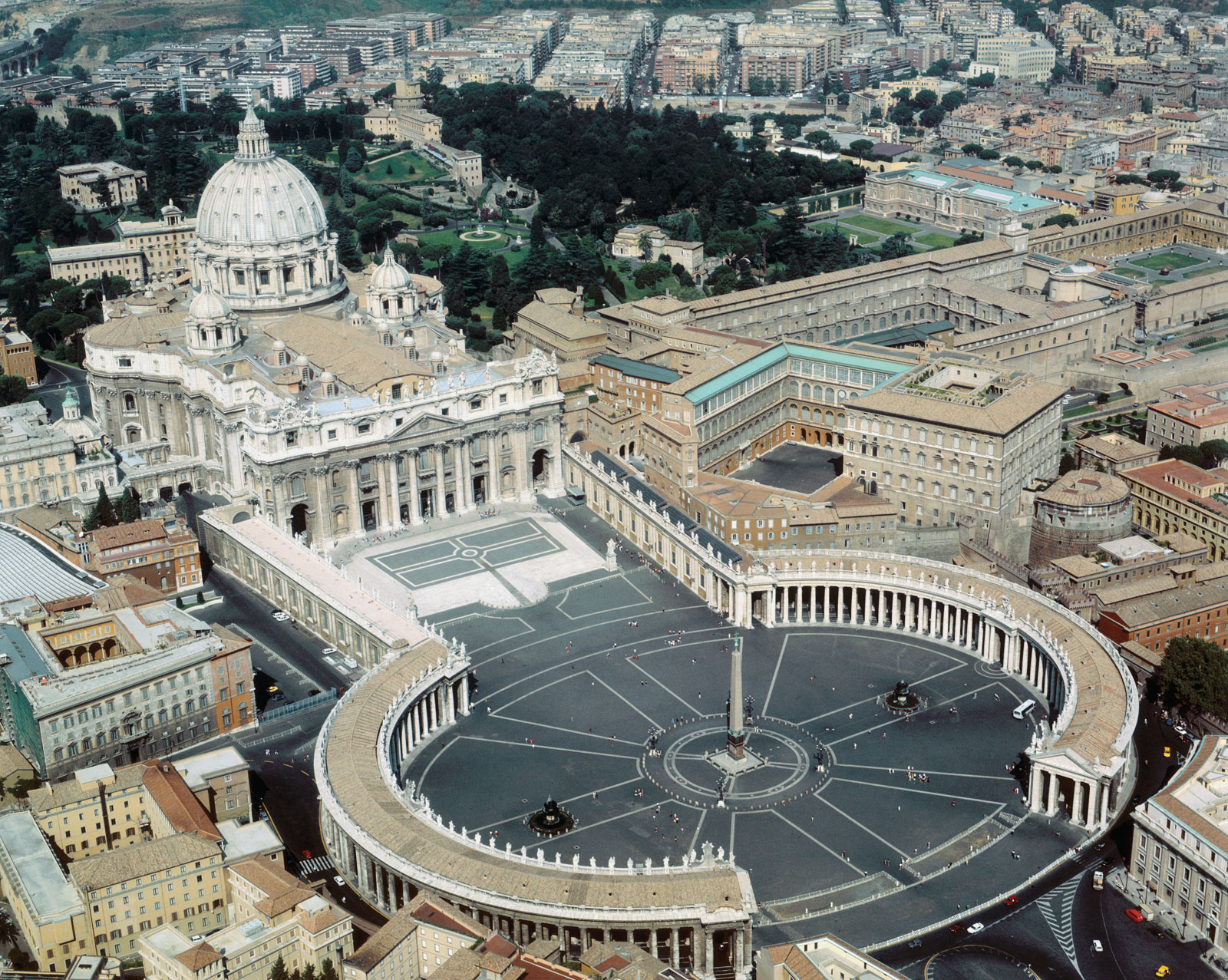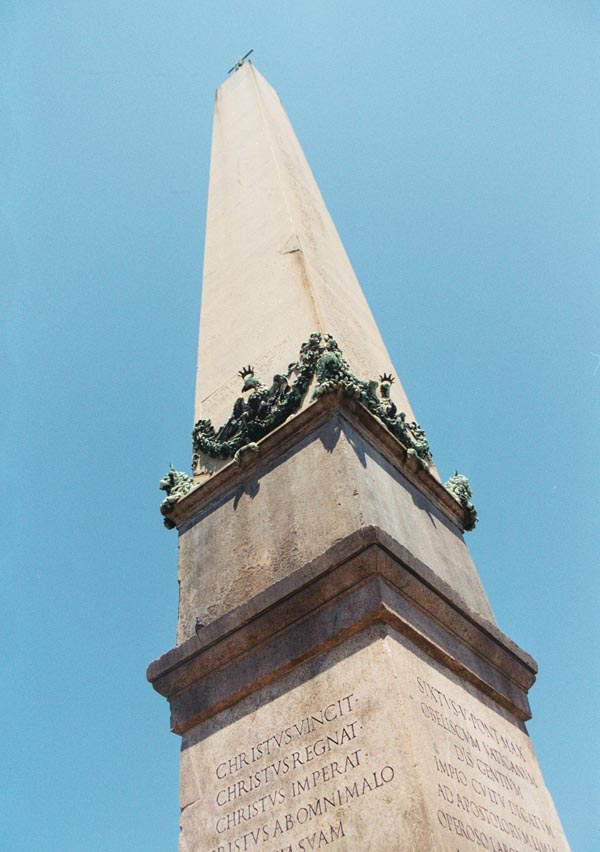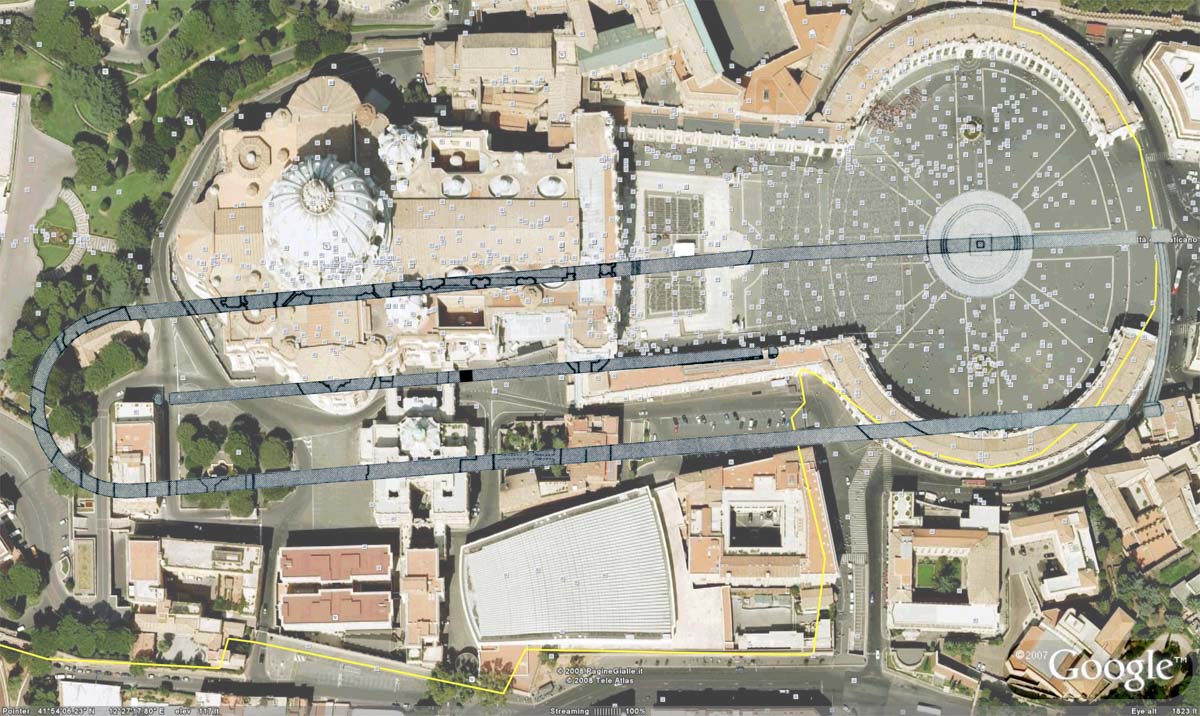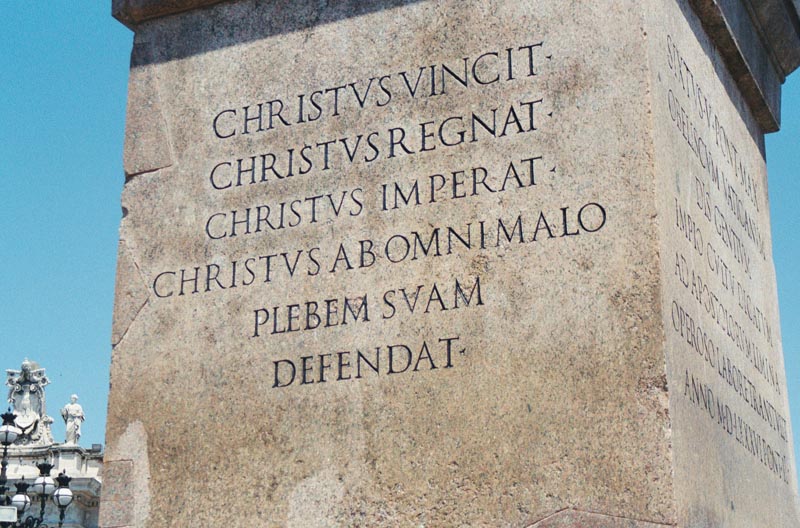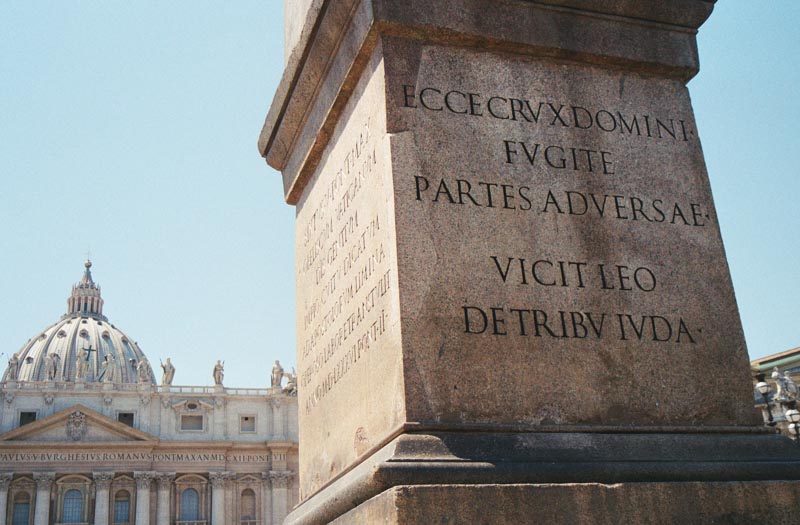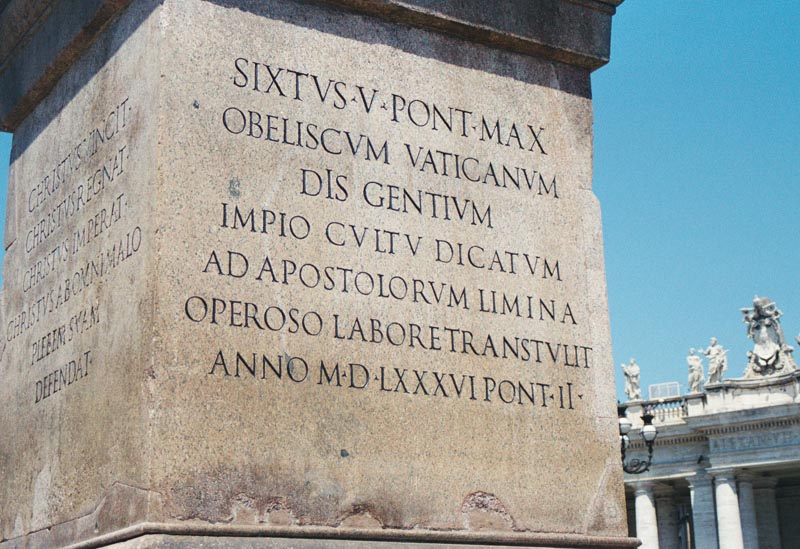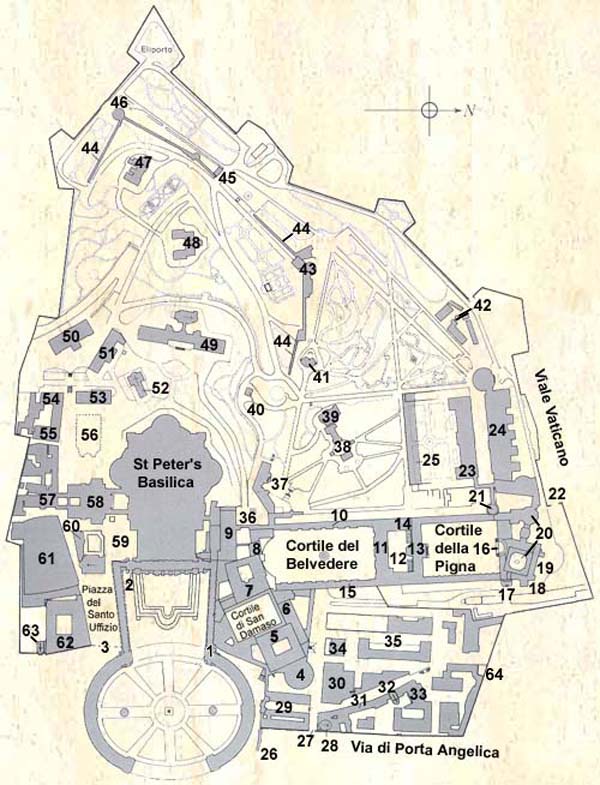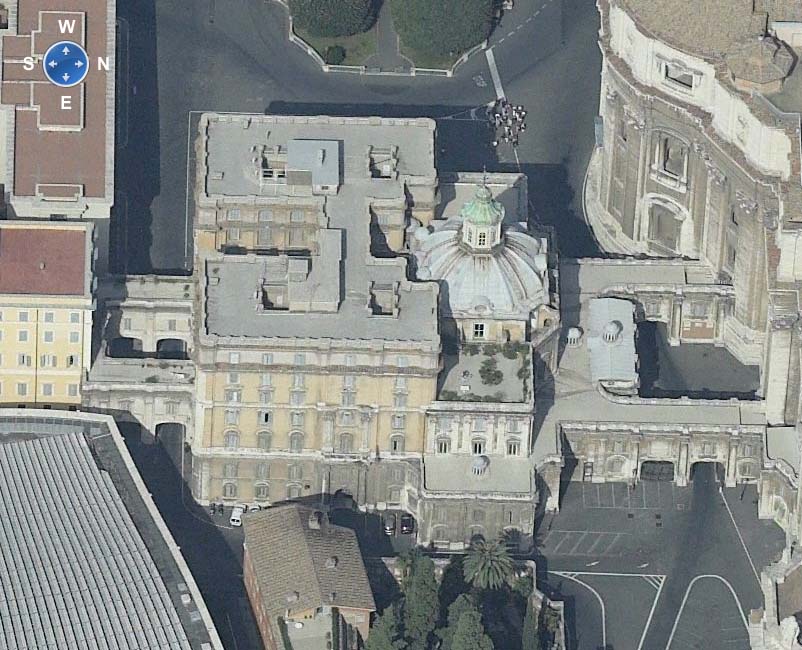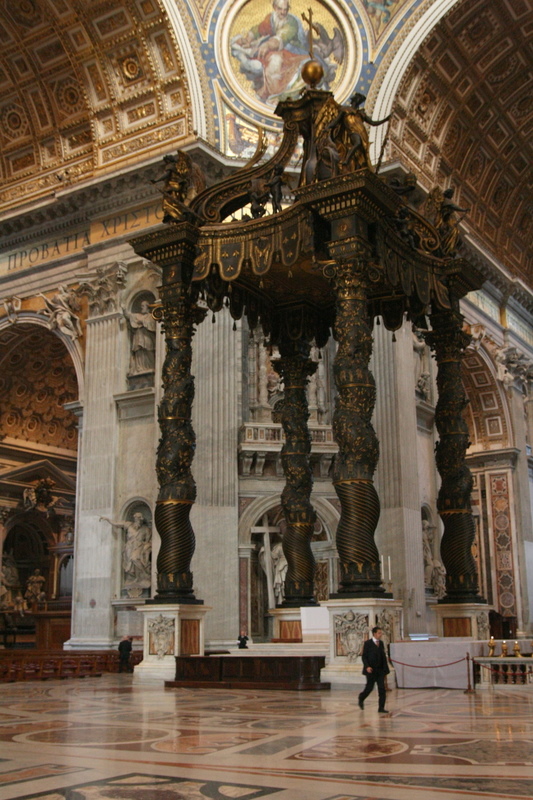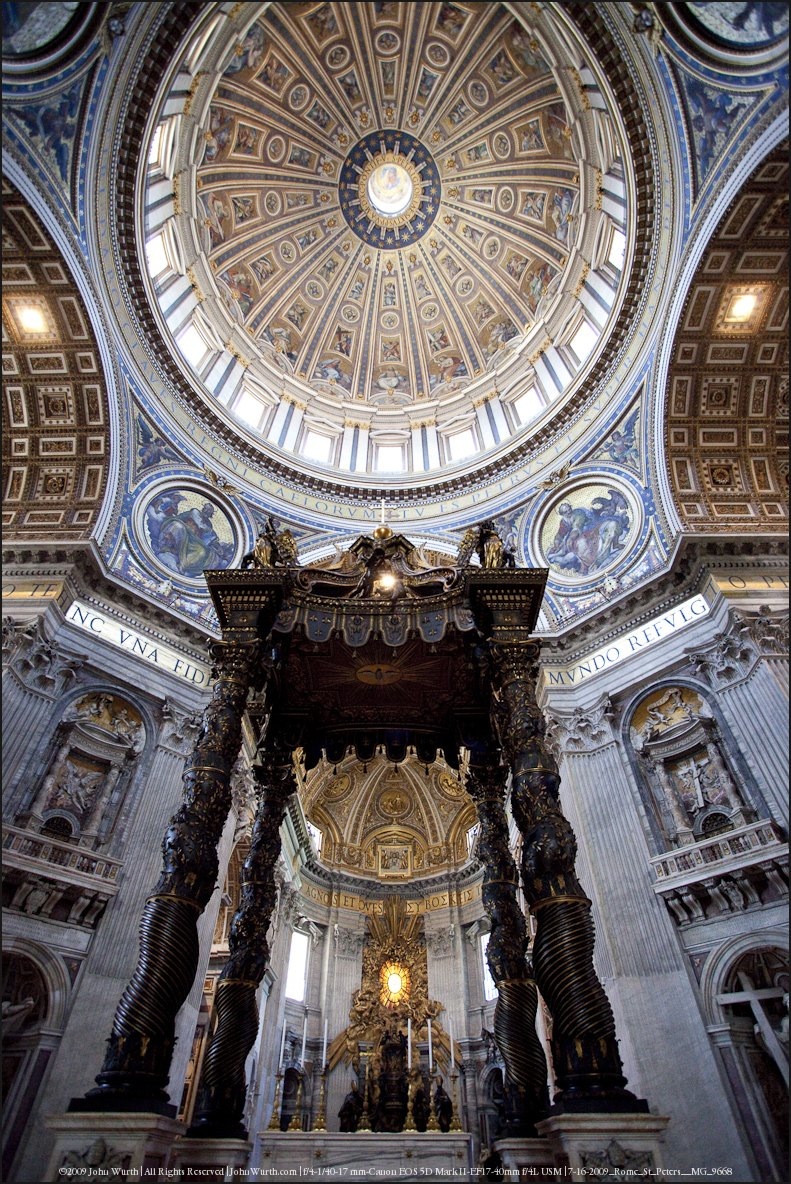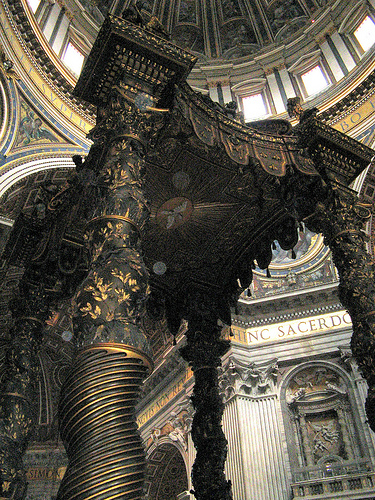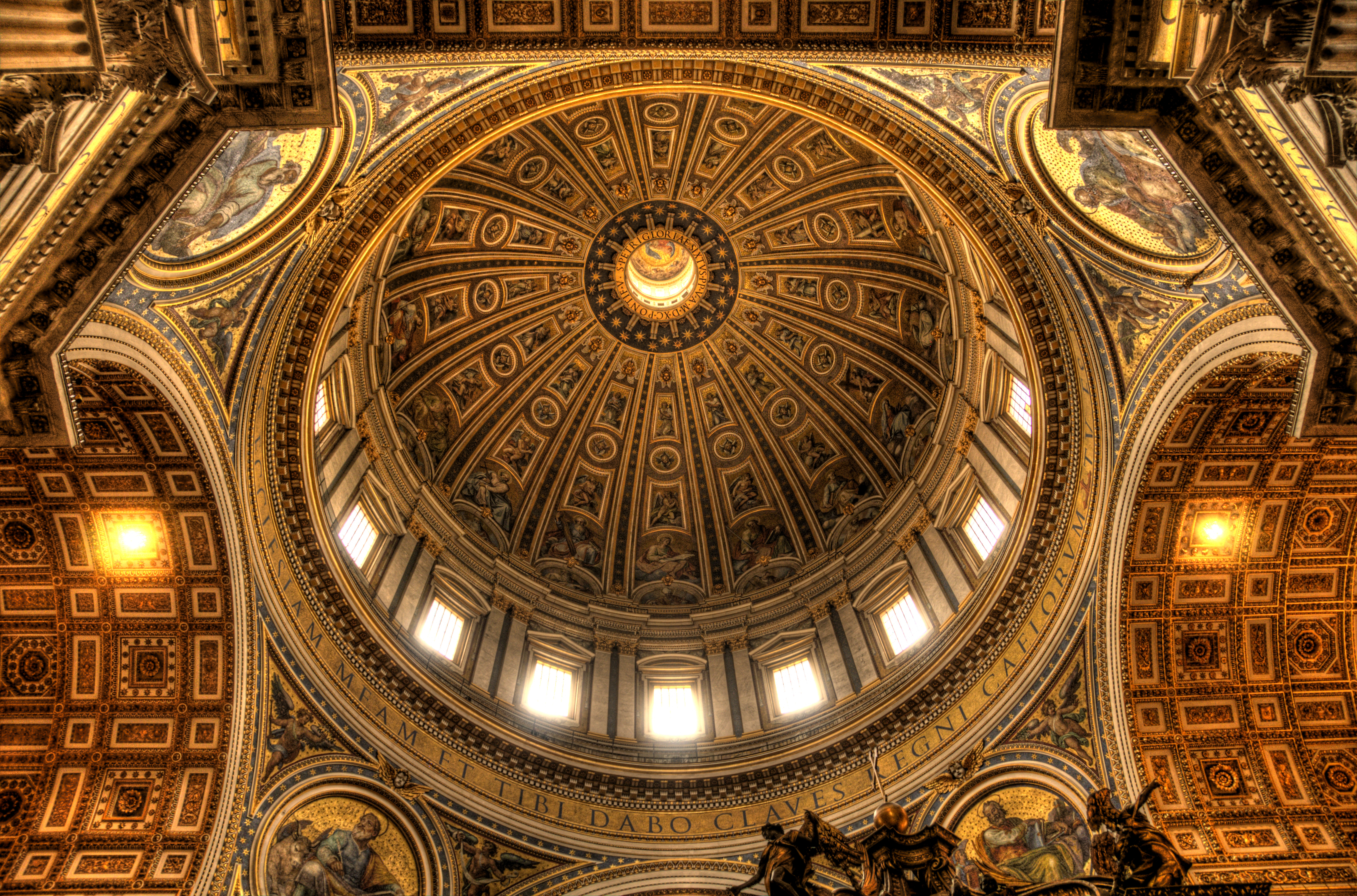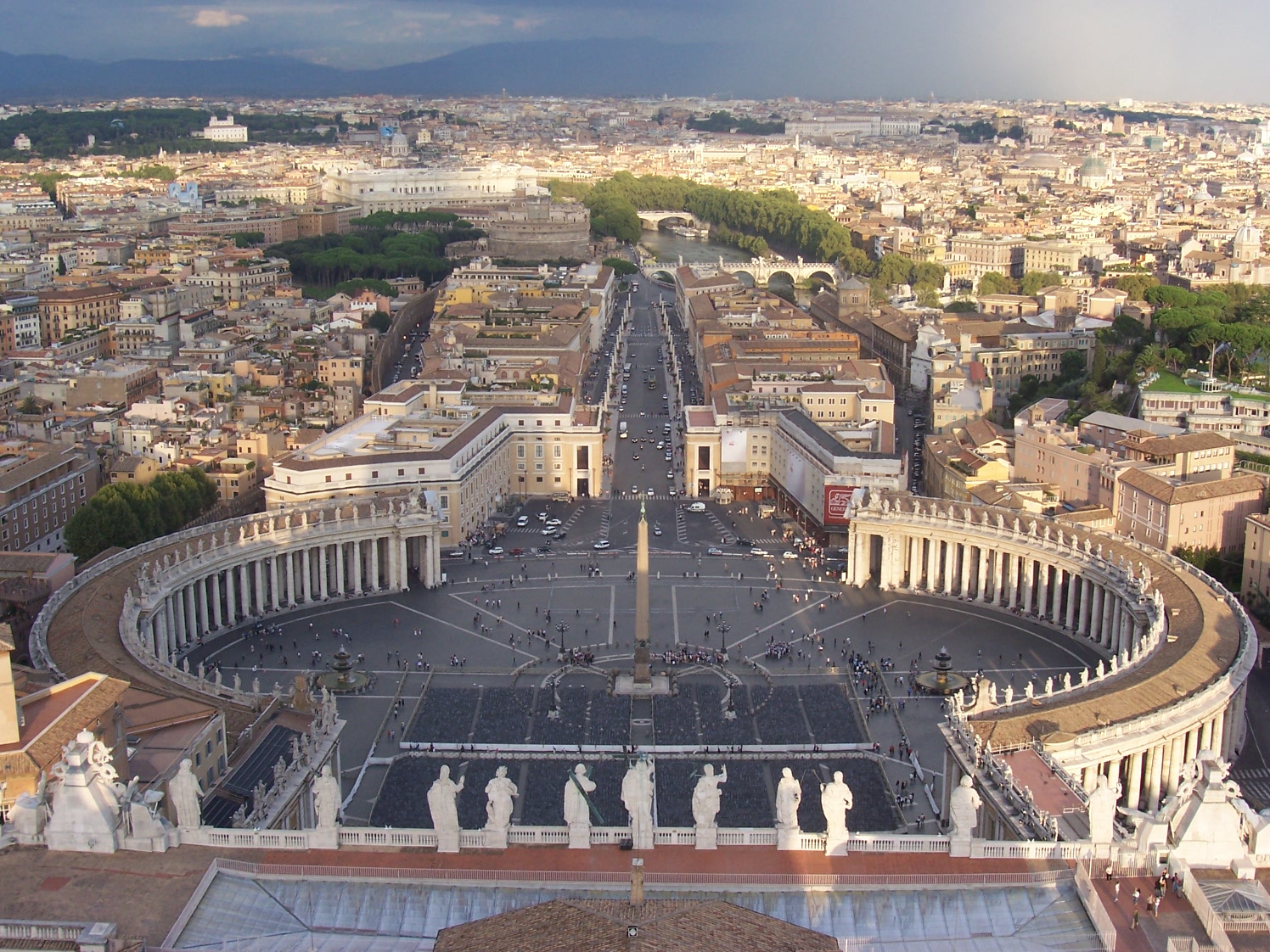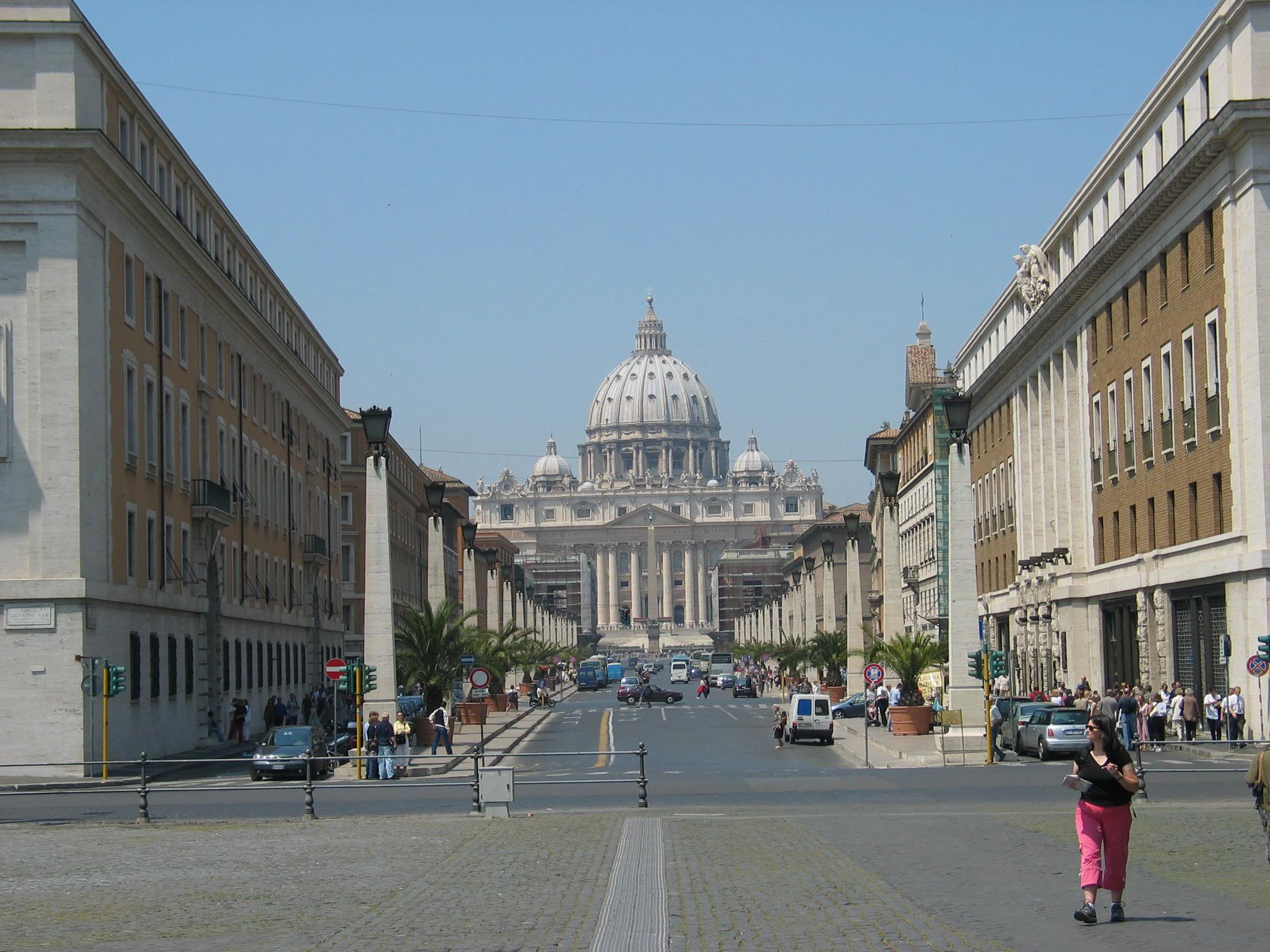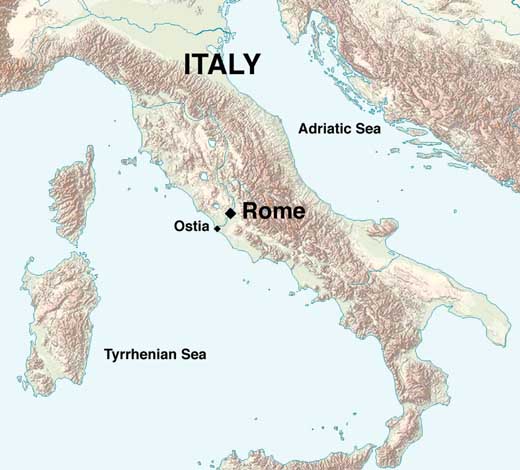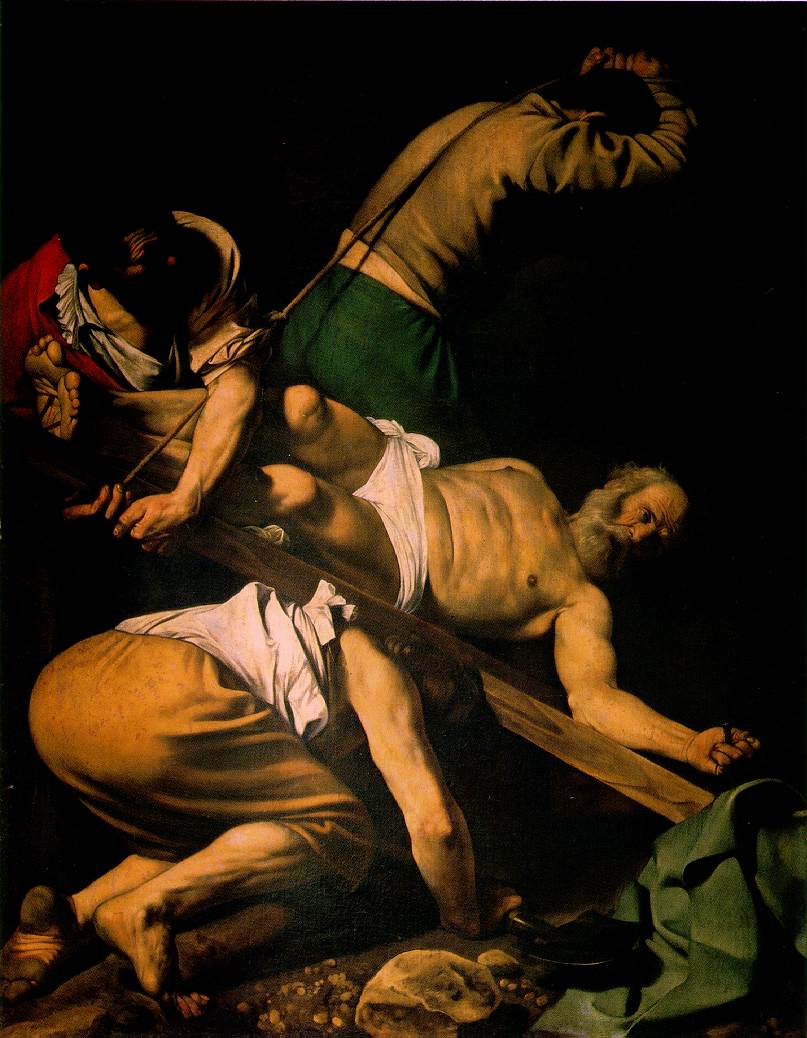From 65 A.D. to 313 A.D, Christians in the Roman Empire had to practice the gospel in hiding. For 248 years Christians were risking their lives to follow the truth of Jesus Christ. Emperor Constantine, in 313 A.D., stopped the persecution of Christians in the Edit of Milan, which removed penalties for professing Christianity and returned confiscated property. Throughout his rule, Constantine supported the Church financially, built basilicas, granted clergy exemption from certain taxes and promoted Christians to government offices. His most famous building projects include the First (Old) Saint Peter's Basilica and the church in Jerusalem called the Church of the Holy Sepulcher. (The tomb in which Jesus was placed in.)
The First Saint Peter's Basilica was built over the Circus of Nero, the place were the blood of Christians were spilled. Construction of Saint Peter's was begun on the orders of the Roman emperor Constantine around 326 A.D and took 30 years to complete.
The First (Old) Saint Peter's Basilica underwent several additions and restorations from 356 A.D to 1506 A.D. Pope Julius II decided that it was time for a new Basilica and this new church was built over the First Saint Peter's Basilica. This deconstruction ruined much of archeological evidence from the Old Saint Peters making the exact history unknown.
Construction of the present basilica took 120 years to build, began on April 18, 1506 and was completed on November 18, 1626.
In 1586, Pope Sixtus V had Nero's obelisk, which was the center piece of Nero's circus, moved it 275 yards to the present location. The obelisk was placed on a new base. The inscriptions on the north and south sides of the base have texts written by Cardinal Silvio Antoniani as a memorial to the moving of the obelisk. The east and west sides have exorcist formulas.
Why erect an Egyptian obelisk at the center of the Vatican? The obelisk is the silent witness and reminder to all of us of the many Christians who were killed by Emperor Nero, and all should know that Saint Peter was crucified upside down near the obelisk. Unfortunately the base in which was made to hold the obelisk says nothing about the Christian martyrs. The previous Popes and bishops have failed to see the importance of the obelisk as a witness to the first martys. The obelisk was at Nero's circus, then the area around the obelisk is holy because of the blood of Christians. Why is a there pavement and parking spaces surround this area? This has happened because no one has seen its importance as the place were Nero killed many Christians. The Sacristy is the closest building to the previous location of the obelisk.
The word 'martyr' comes from the Greek word translated "witness". Some people are mistaken that Nero martyred Christians in the Roman Coliseum. The Roman Coliseum was not completed until 80 A.D., 15 years after Nero spilled the blood of many Christians.
After archaeological excavations, Pope Paul VI, on June 26 1968 announced that the bones of Saint Peter had been found below the alter of Saint Peter's Basilica. It was Emperor Constantine who built the First (Old) Saint Peter's Basilica over the tomb of Saint Peter.
On a hillside on the west bank of the Tiber River in Rome, fortunetellers used to sell their "wares" to passersby's on the street. This place was called "vates" which means in Latin "tellers of the future." From this Latin word "vates" comes the name Vatican.
1) The Church of Saint Peters sits on the blood of Christian Martyrs.
2) The Egyptian obelisk is a silent witness to the Christian executions. The obelisk is not easily moved and thus offers physical proof of the location of Nero's circus.
3) Nero blamed the Christians for Rome's fire and had them executed in front of the Roman' people as entertainment.
4) No proof exists, but tradition says that Saint Peter was crucified upside down at the circus.
5) The Pope has declared the bones of Peter are under the alter at Saint Peters.
Vatican
Egyptian obelisk
Egyptian obelisk
Egyptian obelisk
Egyptian obelisk
Egyptian obelisk
present location
Egyptian obelisk
Nero's Circus
Click on picture too enlarge.
Click on picture too enlarge.
Gray Lines Nero's Circus
Christ Conquers
Christ Reigns
Christ Commands
Christ defends His people from every evil.
Behold the Cross of Christ
The party of the adversaries flees
The Lion of the tribe of Judah conquers.
Pope Sixtus V
In the year 1586, the 2nd of
his Pontificate
Wealthy people transferred the
Vatican Oblesik
Consecrated (formerly) by
wicked worship
to the threshold of the apostles
by (their) laborious work
Old Saint Peter's Basilica
east
south
Previous location of Egyptian obelisk
Click on picture too enlarge.
Click on picture too enlarge.
Click on picture too enlarge.
Click on picture too enlarge.
Saint Peter's Bones below alter
Click on picture too enlarge.
Click on picture too enlarge.
Click on picture too enlarge.
Click on picture too enlarge.
Click on picture too enlarge.
The Obelisk came from Egypt by boat. The Egyptians believed the obelisk would flow divine power from heaven to earth by the noon sun god Ra.
The "Annals" is a history book by Tacitus covering the reign of the four Roman Emperors succeeding Caesar Augustus. The parts of the work that survived from long ago cover most of the reigns of Tiberius and Nero. The title Annals was probably not given by Tacitus, but derives from the fact that he treated this history in a year-by-year form. The original title was most likely Ab excessu divi Augusti, "Following the death of the divine Augustus".
Tacitus lived from 56 AD to 117 AD. He was a senator in the Roman Empire.
http://classics.mit.edu/Tacitus/annals.html
Click on picture too enlarge.
Click on picture too enlarge.
Through tradition, it is said that Peter was crucified upside down. 67 A.D.
The Vatican, which means prophetic, sits on Holy ground because a large number of Christians were killed by Nero at this location.
Vatican city is built upon the blood of many Christians who were killed by Emperor Nero. The circus was the site of the first organized, state-sponsored martyrdoms of Christians in 65 A.D. Tradition holds that two years later, 67 A.D., Saint Peter and many others also shared martyrdom. After Rome's fire in 64 A.D., emperor Nero blamed the Christians for starting the fire. A man named Tacitus, who thought Christians were evil, a roman senator and historian who lived from 56 AD to 117 AD, he wrote in his book now called "The Annals". The following is what he wrote about the Christians.
"Consequently, to get rid of the report, Nero fasten the guilt and inflicted the most select tortures on a class hated for their abominations, called Christians by the people. Christus, from whom the name had its origin, (Jesus Christ) suffered the extreme penalty during the reign of Tiberius (Emperor of Rome.) at the hands of one of our governors, Pontius Pilatus, and a most mischievous superstition, (He is referring to Christianity) thus checked for the moment, (Referring to Jesus Crucifixion.) again broke out not only in Judea, the source of the evil, but even in Rome, where all things hideous and shameful, from every part of the world find their center and become popular. Accordingly, an immense multitude was convicted, not so much of the crime of firing the city, as of hatred against mankind. Mockery of every sort was added to their deaths. Covered with the skins of beasts, they were torn by dogs and perished, or were nailed to crosses, or were doomed to the flames and burnt, to serve as a nightly illumination, when daylight had expired".
Nero's circus was a chariot track used for racing. Since the circus could hold thousands of people, Nero used the circus to execute Christians in front of large audiences. No one knows exactly what Nero's circus looked like, but these two drawings and one model helps us visualize the chariot track might have been. Somewhere at the circus stood the Egyptian obelisk. Most likely at the center of Nero's elliptical track stood the Egyptian obelisk of red granite, 84 feet tall.
Email
mercermark@att.net


